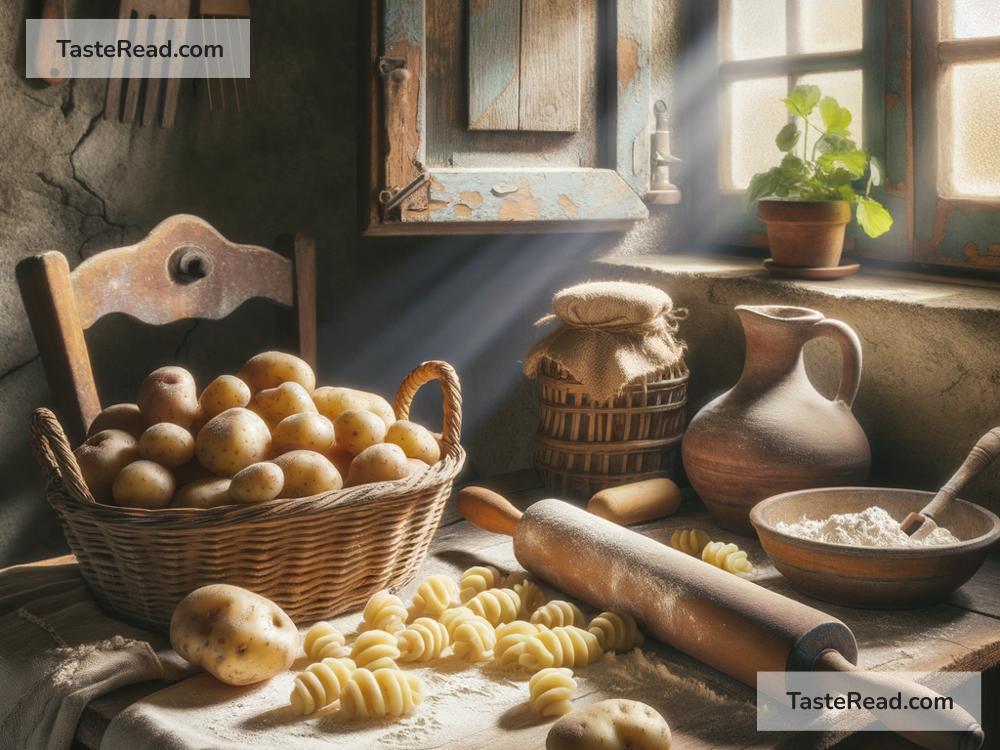Origins of the First Gnocchi in Ancient Tales
Many people enjoy gnocchi—a soft, pillowy food often made from potatoes, flour, and eggs. But where did gnocchi come from? It’s not just a dish; it has history, stories, and myths that go back centuries. Let’s explore the fascinating origins of this simple yet delicious creation.
What Is Gnocchi?
Before diving into its history, let’s talk about what gnocchi is. In Italian, the word “gnocchi” comes from the word nocca, meaning “knuckle,” or nocchio, meaning a knot in wood. These small dumplings get their name because they resemble little rounded shapes, like bumps or knots.
While many people think of gnocchi as being made from potatoes, earlier versions of gnocchi didn’t include them. Potatoes only became common in Europe after explorers brought them from the Americas in the 16th century. So, gnocchi existed long before the potato arrived on the scene.
Gnocchi in Ancient Times
The idea of dumplings like gnocchi has been around for thousands of years. People in ancient Rome ate something similar that was called “puls.” Puls was a porridge-like mix of wheat flour and water, sometimes shaped into small dumplings and cooked. Wealthier Romans would add ingredients like eggs or spices to make puls tastier.
Roman recipes collected in old texts, like those by Apicius, show early forms of gnocchi made with flour, eggs, and sometimes cheese. These were hearty and filling, perfect for feeding people who worked hard. Soldiers, farmers, and laborers appreciated these dumplings because they were easy to make and provided energy.
As the Roman Empire spread across Europe, so did their foods. Early versions of gnocchi could be found in many parts of Italy, France, and other regions influenced by Roman cooking.
Myths and Folklore Surrounding Gnocchi
Because gnocchi is such a loved dish, there are some interesting myths tied to its origins. One story tells of how gnocchi was created by accident. The tale begins with an imaginative Roman homemaker who was trying to make bread. She shaped little round pieces of dough, but instead of baking them, she boiled them in water. To her surprise, the result was soft, tender dumplings. People loved them so much that the recipe spread all over the region!
Another legend comes from medieval Italy. During difficult periods, when food supplies were low, humble peasants would use whatever scraps of flour they had to create gnocchi-like dumplings. Some myths even say gnocchi became a dish to share during times of famine because it used simple ingredients everyone could contribute to.
A lighter tale relates to Saint Pantaleon, an Italian saint from the Christian tradition. It is said that on a Thursday in the 16th century, Saint Pantaleon visited a poor family in Venice. They offered him gnocchi as the only food they had to share. After he blessed them, their pantry miraculously filled with food, and gnocchi became associated with small miracles of generosity. Even today, many Italian families eat gnocchi on Thursdays, following this custom.
The Arrival of Potatoes
The potato didn’t join the gnocchi recipe until the late 17th century. Potatoes were introduced to Europe from South America after Spanish explorers brought them back in the 1500s. At first, Europeans were suspicious of potatoes, thinking they were strange and possibly unhealthy. But over time, people learned how delicious and versatile potatoes could be.
In Italy, cooks discovered that adding mashed potatoes to gnocchi dough made the dumplings lighter and fluffier. The potato version quickly became the most popular type of gnocchi, especially in northern Italian regions where potatoes were easier to grow than wheat.
Regional Variations
Even though potato gnocchi became famous, there are many variations of gnocchi in Italy. For example:
- Gnocchi alla Romana: In Rome, gnocchi is made from semolina flour instead of potatoes. These dumplings are shaped into disks, baked, and served with butter and cheese.
- Pumpkin Gnocchi: In some parts of northern Italy, people blend pumpkin into the dough for a sweeter flavor.
- Ricotta Gnocchi: Ricotta cheese replaces potatoes in certain recipes, resulting in creamy, rich gnocchi.
Different regions in Italy use local ingredients to make gnocchi their own. This variety shows how gnocchi has evolved depending on what ingredients were commonly available.
Gnocchi Today
Gnocchi has come a long way since its humble beginnings. Today, it is enjoyed worldwide, with chefs experimenting by adding spinach, herbs, or even using gluten-free flour to make modern variations. While gnocchi’s ingredients may change, its heart remains the same: a dish meant to comfort, nourish, and bring people together.
Why We Love Gnocchi
The reason gnocchi has lasted through the centuries is simple—it’s easy to prepare and endlessly adaptable. It reflects human ingenuity, using whatever we have available to create something wonderful. Whether made with wheat flour, potatoes, or cheese, gnocchi reminds us of the creativity of cooks throughout history.
So the next time you enjoy a plate of gnocchi, remember that you are tasting a piece of history. From ancient Rome to modern kitchens, gnocchi has traveled far, carrying with it stories of resilience, generosity, and the joy of sharing a meal.
Bon appétit—or as the Italians say, “Buon appetito!”


